LA Galaxy currently holds the second position in the Western Conference of Major League Soccer, MLS, with 18 points after 10 matches, trailing the table-toppers Real Salt Lake by just four goals. Each team has won five matches, drawn three, and lost two.
On the offensive front, LA Galaxy are considered to have the best attacking line in the Western Conference, having scored 21 goals, a margin of four ahead of the league leaders, Real Salt Lake. This reflects their offensive prowess thus far. However, LA Galaxy have conceded 17 goals — the fourth-worst defensive line in the Western Conference. This underscores their defensive challenges, especially when considering that the table-toppers, Real Salt Lake, have conceded only nine goals.
Upon scrutinising the statistics, we discovered that one of the key factors contributing to their defensive shortcomings is their status as the team conceding the most goals from set pieces in Major League Soccer, with seven goals equal to Portland Timbers. To confirm that this statistic is not merely coincidental or based on chance, they are also the team most exposed to xG from set plays in MLS, with 4.01.
Six of these seven goals conceded from set-pieces were from corner kicks, making them the team most vulnerable to this type of set-piece in MLS. Consequently, our focus will be on analysing their defence in dealing with corner kicks.
In this tactical analysis, we will delve into the defensive tactics employed by LA Galaxy at corner kicks. We will elucidate the players’ actions in dealing with various scenarios, highlighting certain challenges that have prompted adjustments to their defensive system. Furthermore, we will also present some suggestions for improvement.
The main scheme
Starting with their defending scheme at corners, they defend with a hybrid defending system with four zonal defenders, four man markers, a short-option defender and a defender standing on the edge of the box to get the rebound, as shown in the photo below.
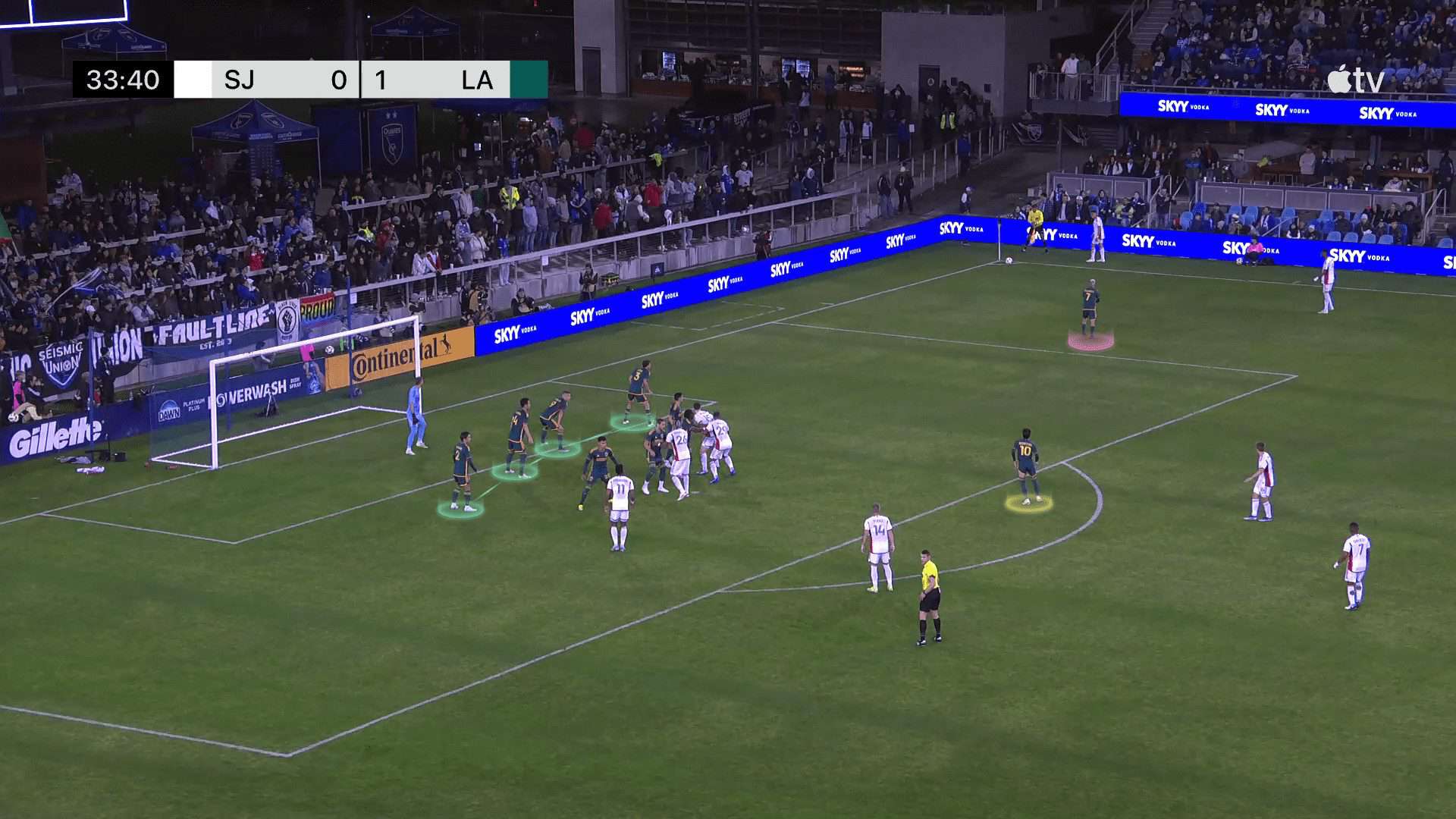
If you look back to the previous photo, you will find that the opponent attacks the box with four attackers, so there is no problem, but what if the opponent attacks the box with five?
As shown below, if the fifth attacker starts near the far post or around it, the last zonal defender leaves his position to track him as a man marker, leaving this area empty. As a consequence, you may ask what will happen if the opponent decides to target this area. Let’s see their answer!
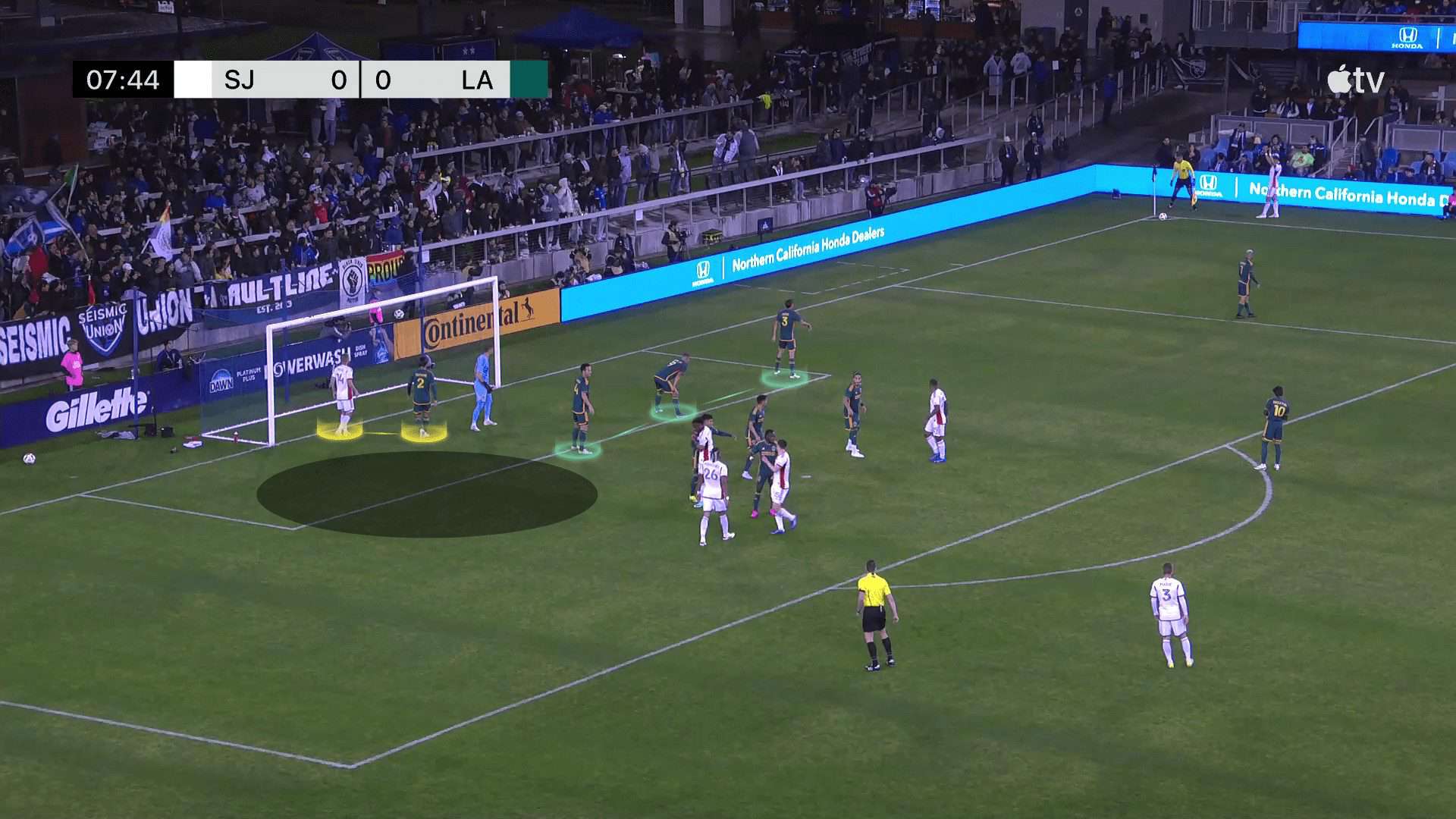
In the first photo below, the four zonal defenders are highlighted in green. At the same time, the free attacker stands with the last zonal defender and drags him out of his position. Hence, this area becomes empty, as shown in the second and third photos, but the answer comes in the fourth photo, where they depend on the goalkeeper to kill the problem from the beginning, so he goes to claim the ball, preventing it from getting to the far post.
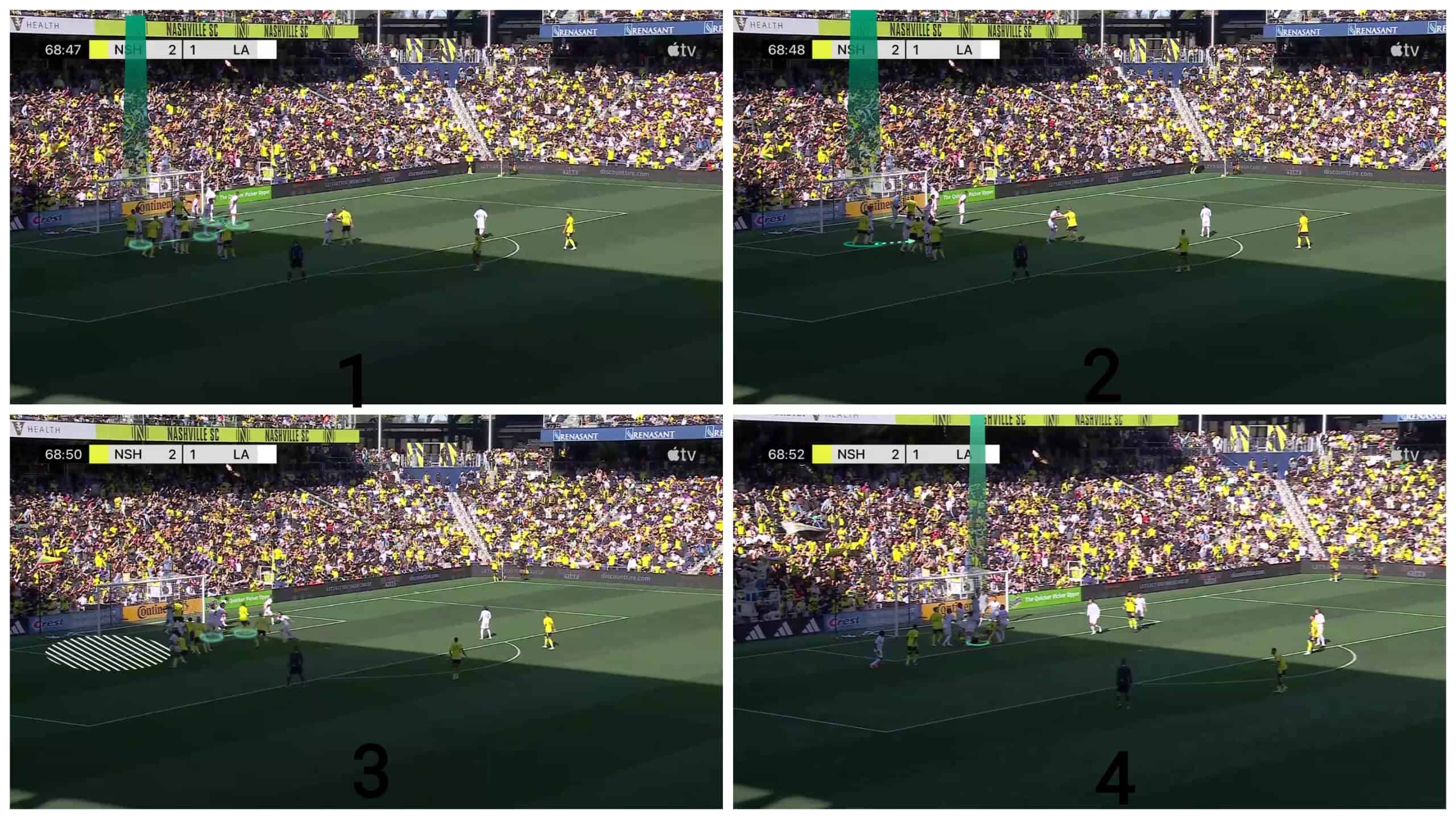
The far-post problem
The goalkeeper can’t deal with all crosses, so opponents try to target this area while making it harder for the goalkeeper to claim the ball at the same time. One of these methods is using an out-swinging cross to make the ball move away from the goalkeeper while it gets nearer. The opponent simply asks two yellow attackers to go to the targeted area. The two markers face an orientation problem because these attackers move in the opposite direction of the ball, which makes it harder for the markers to keep tracking the ball and the attacker at the same time so one of them can get the ball with his feet, so he can’t control the ball well, as shown in the third and fourth photos.
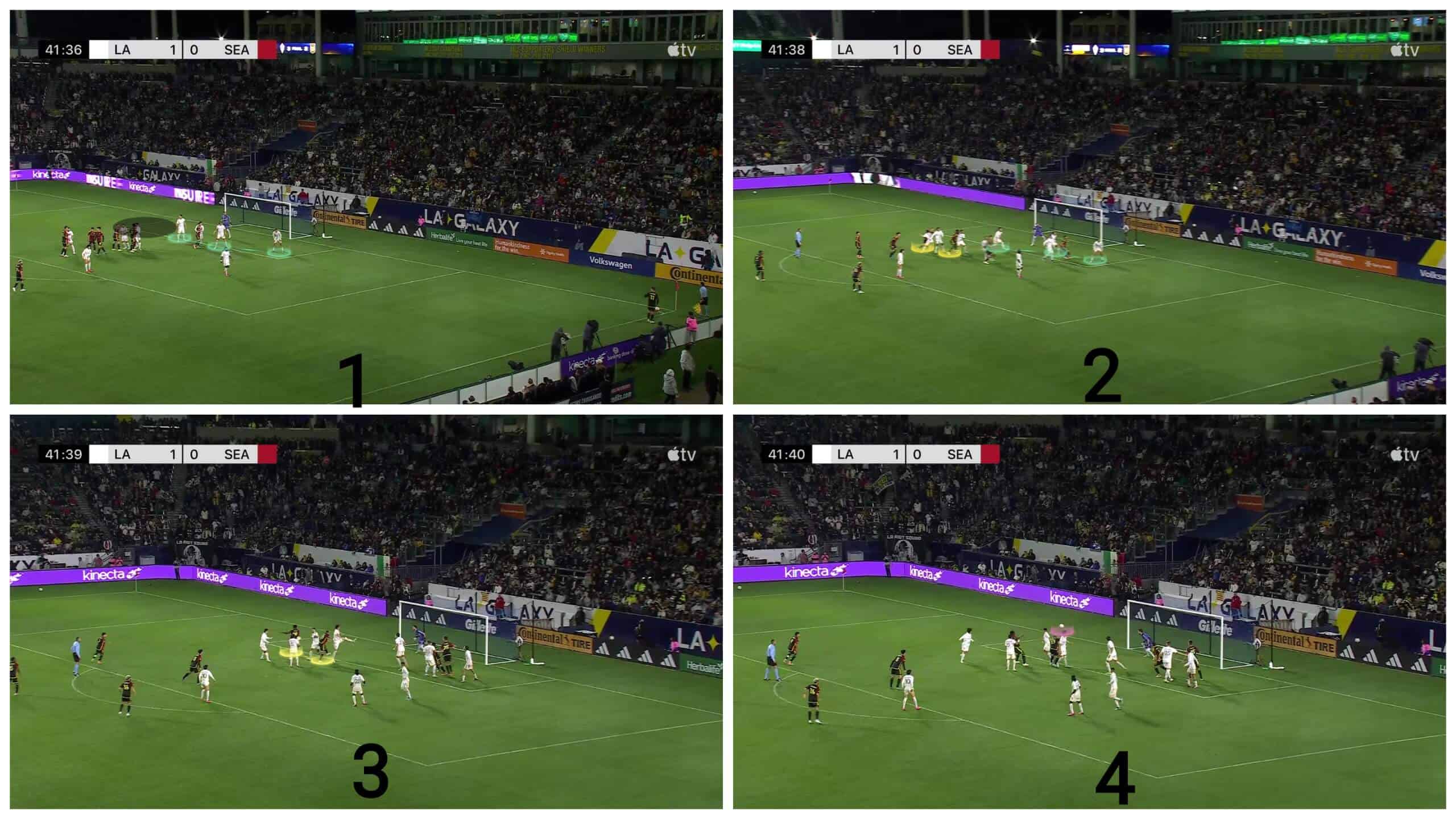
The previous case is so simple, so let’s see another effective idea.
In the photo below, the opponent uses traffic in front of the goalkeeper to prevent him from going up to claim the ball, so after playing the cross, two players will step back to the targeted area in yellow arrows.
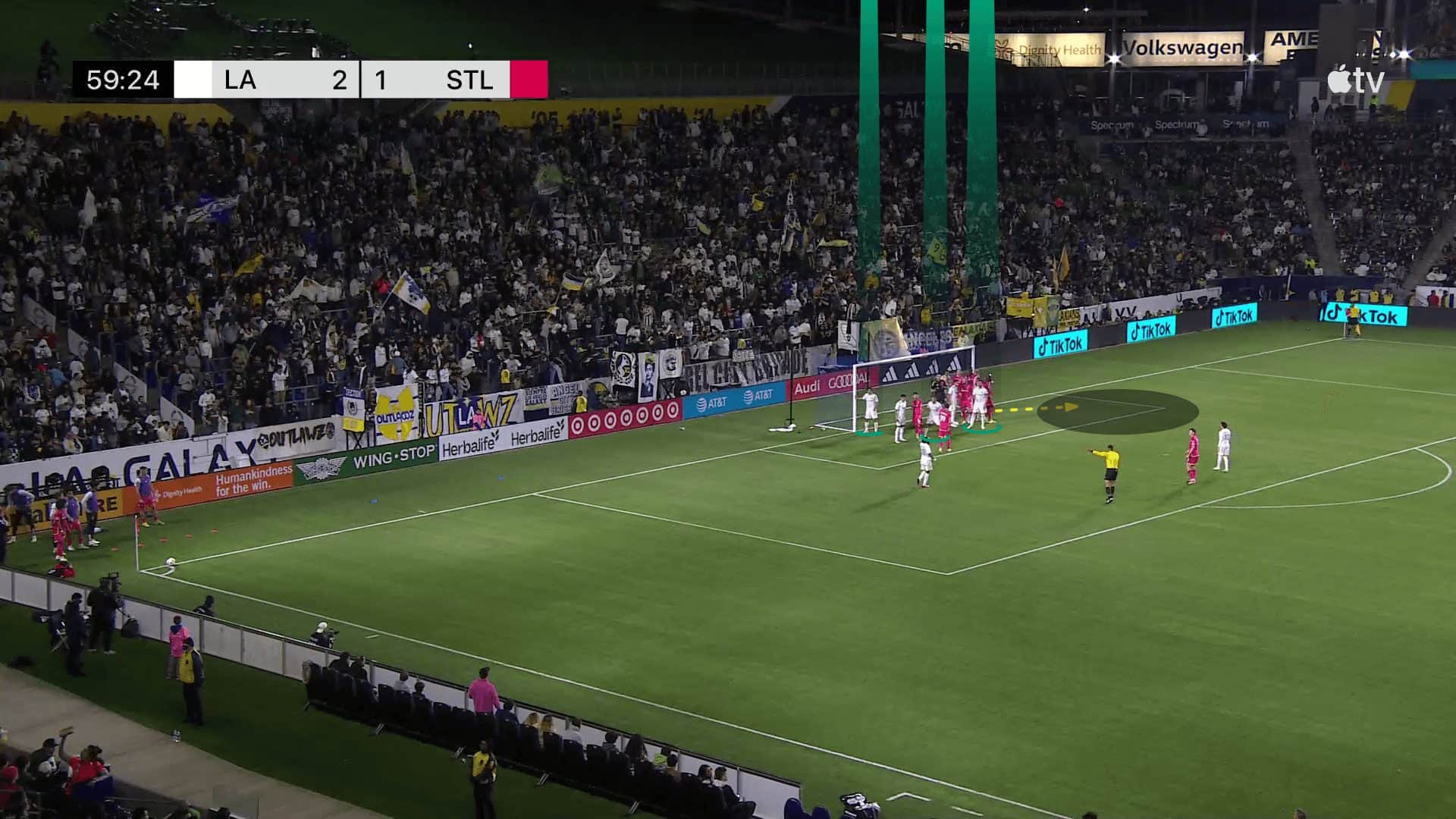
In the two photos below, they leave a player in blue to block the goalkeeper, ensuring he won’t be able to go to claim the ball. When he tries to turn around, he faces an attacker blocking him.
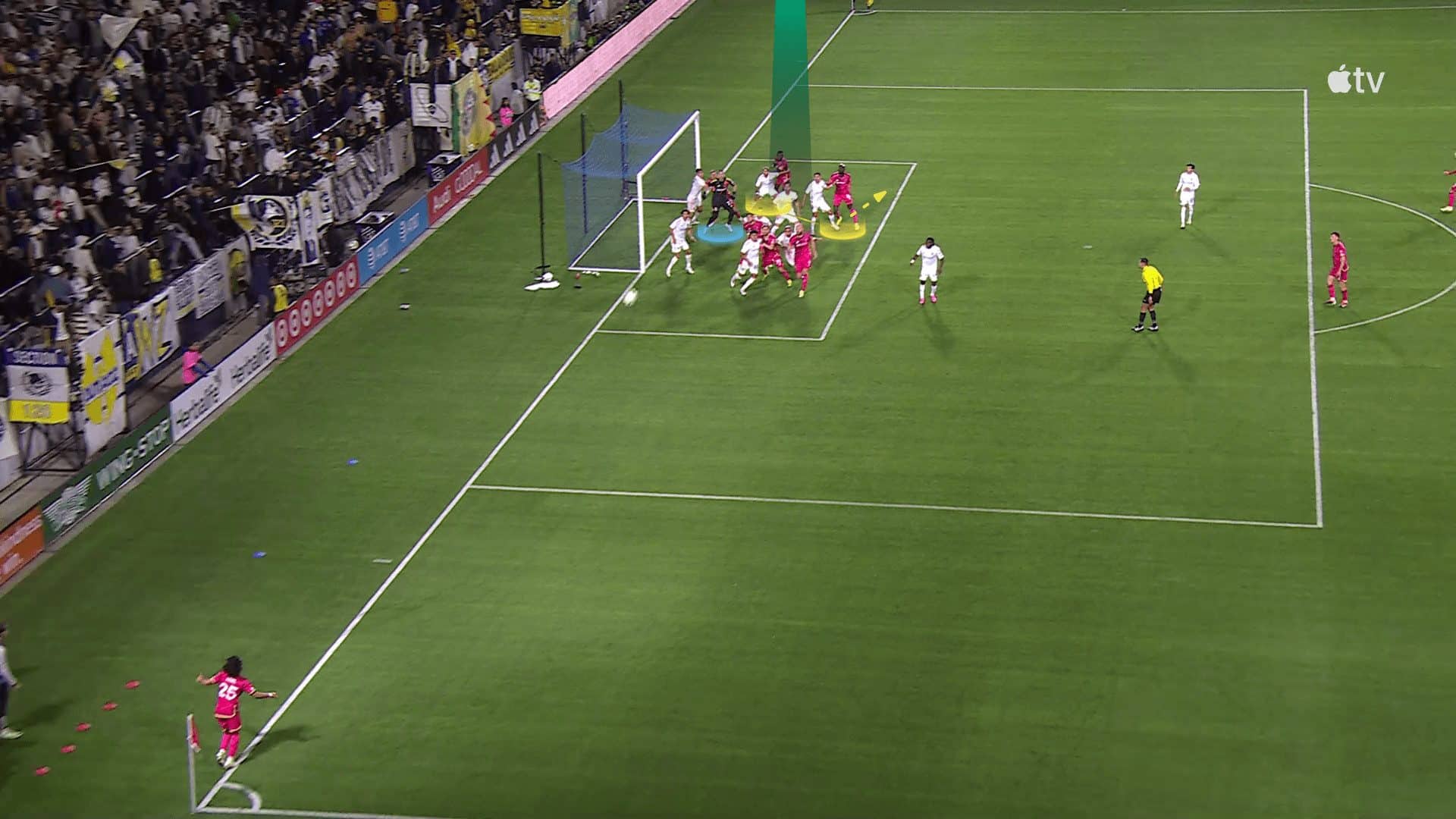
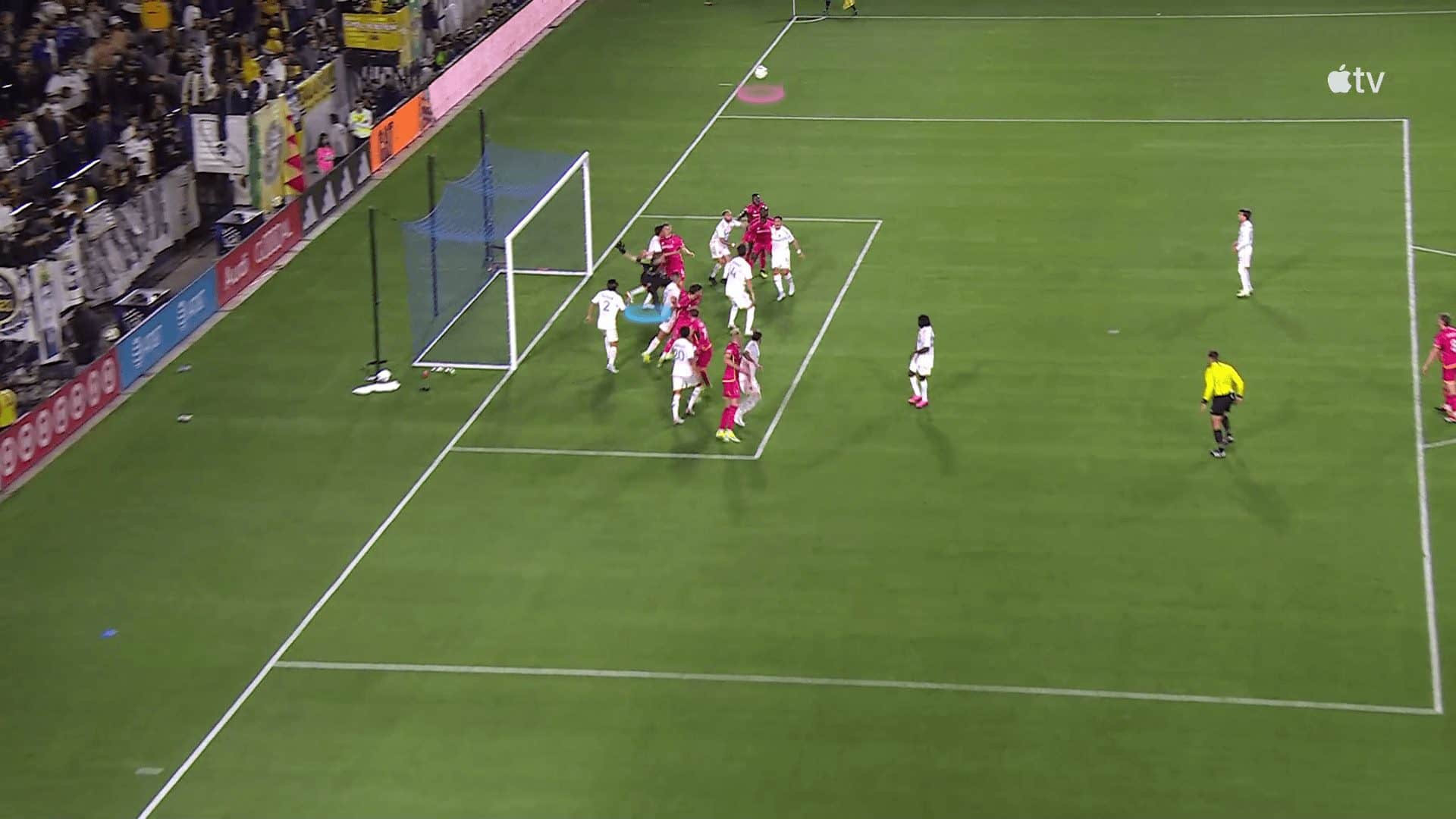
In the photo below, the other players frame the goal, waiting for the headed pass. This framing helps increase the possibilities of getting the headed pass in valuable areas, as happens indeed in the second photo below, and the result is a goal.
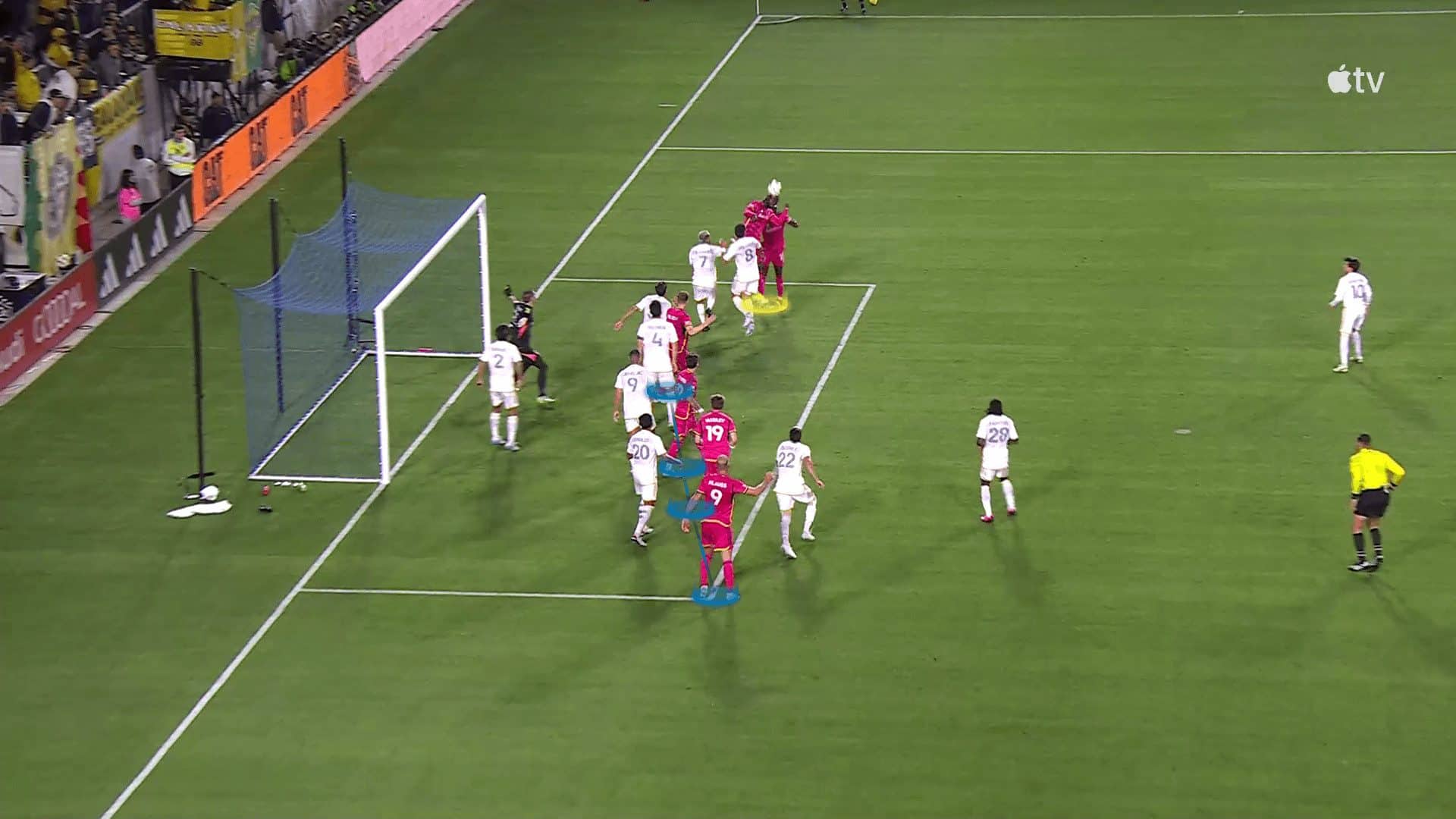
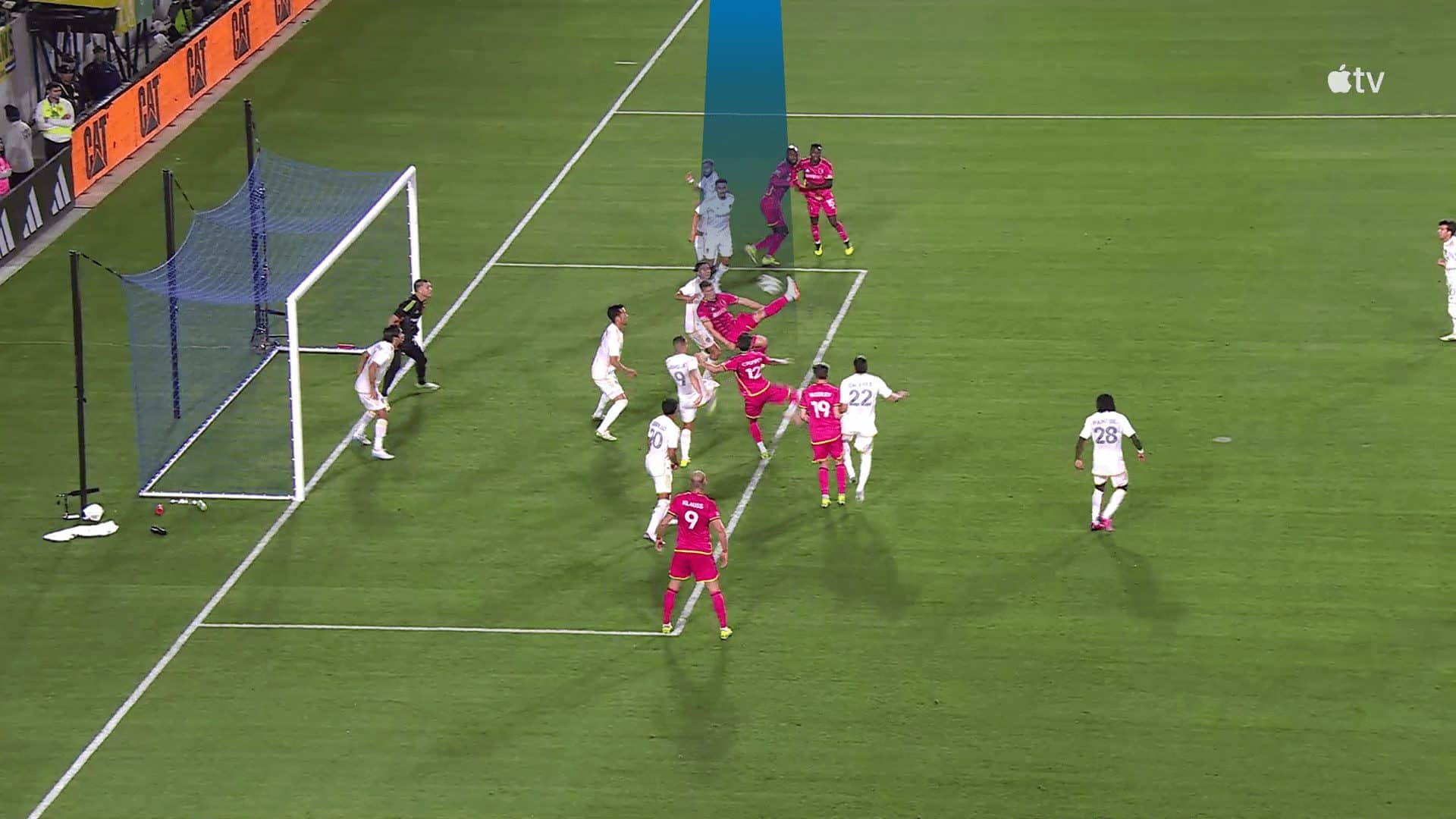
The near-post problem
The second problem happens when the second zonal defender pushes up to defend flicks and gets the first touch, so the area behind him gets larger, and a gap is formed between the second and the third zonal defenders, as shown in the two photos below.
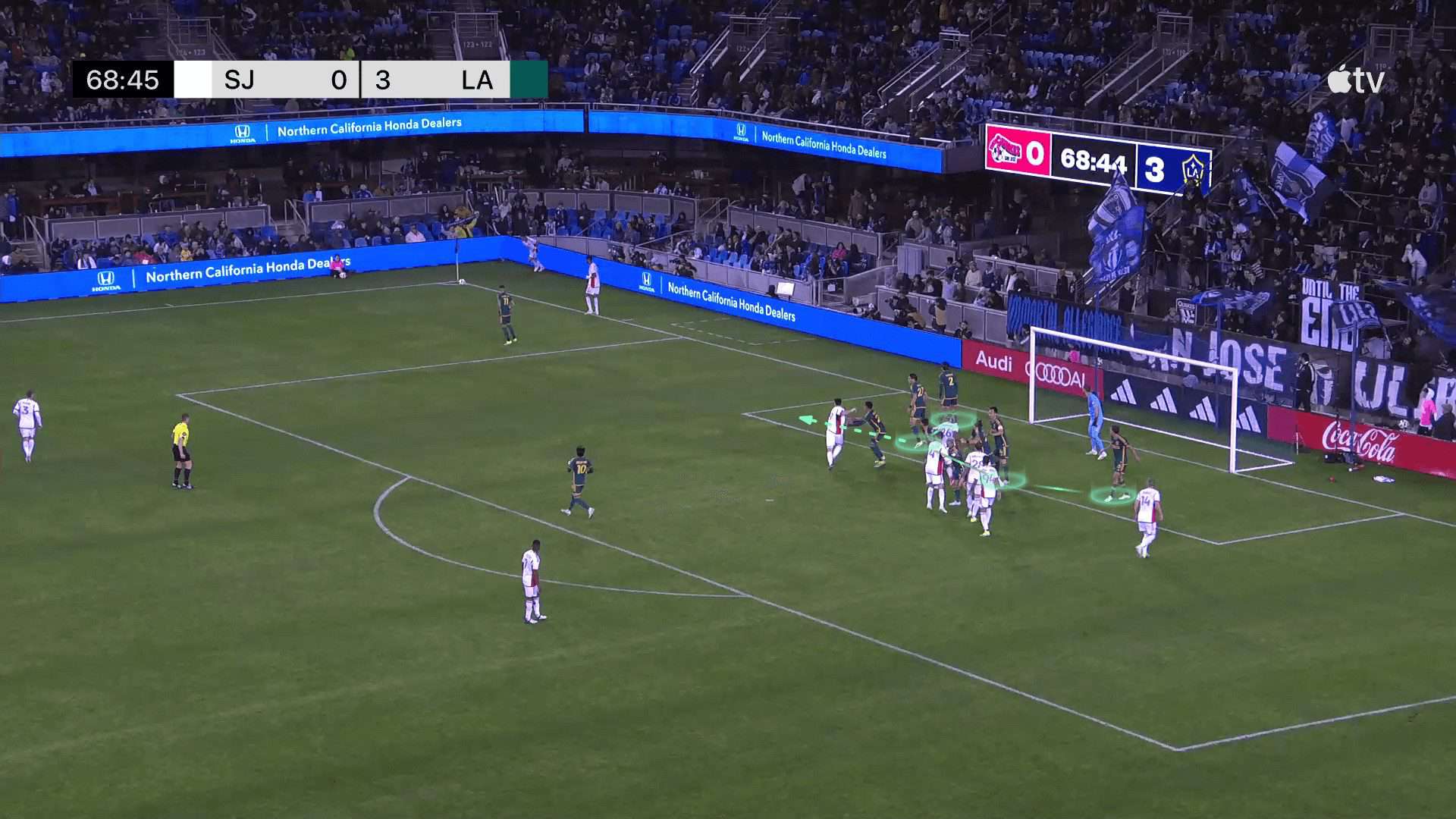
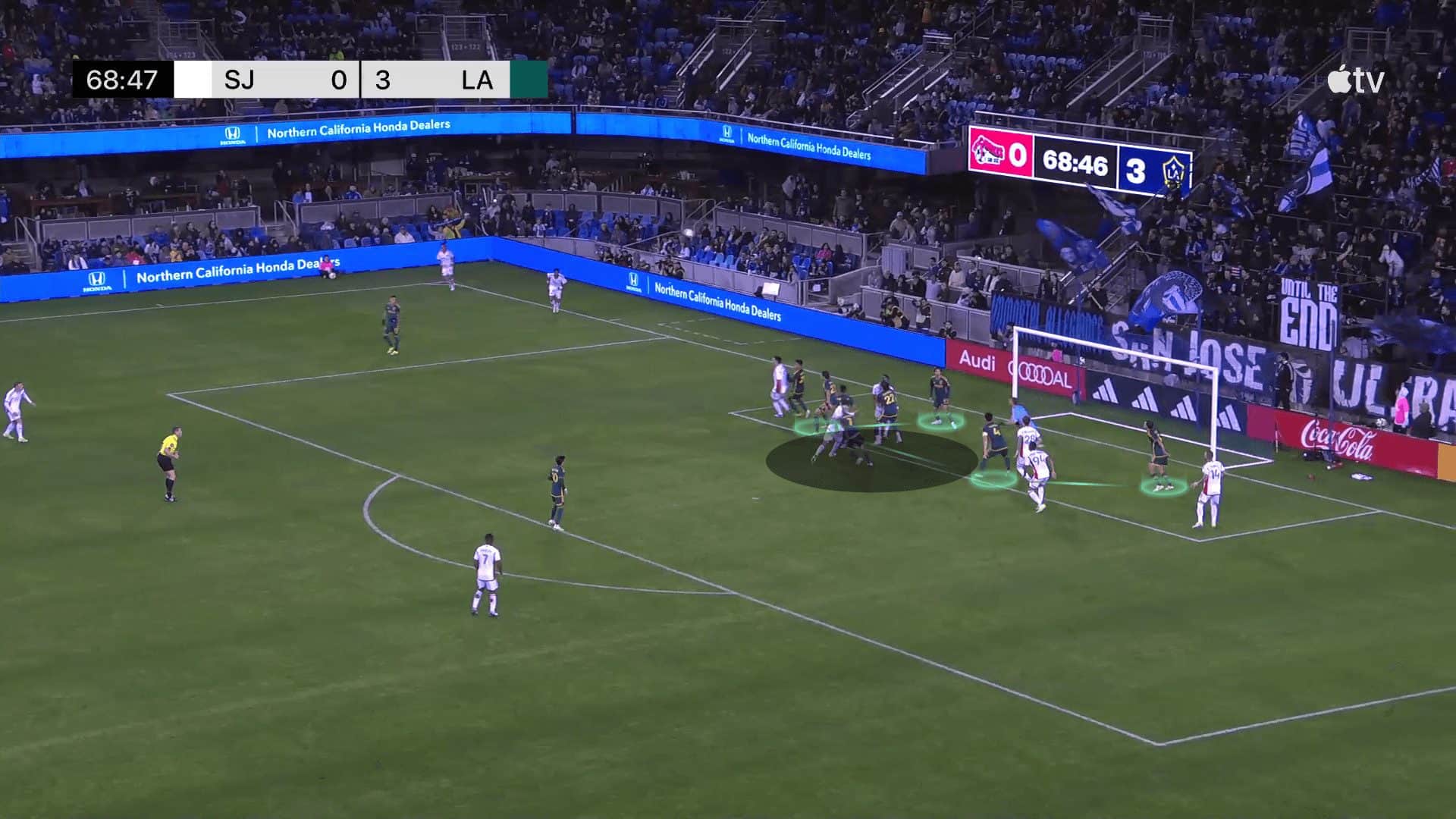
They also sometimes depend on the goalkeeper to fill this gap, as shown below, but it is not always easy.

In the photo below, they also depend on the first zonal defender, the one who stands near the post, to cover this gap between the second and third zonal defenders when the second one is forced to push forward to defend flicks, but the space is large, and he can’t always have the time to win the duel, especially when the attacker comes freely with his momentum, as shown in the second photo below.
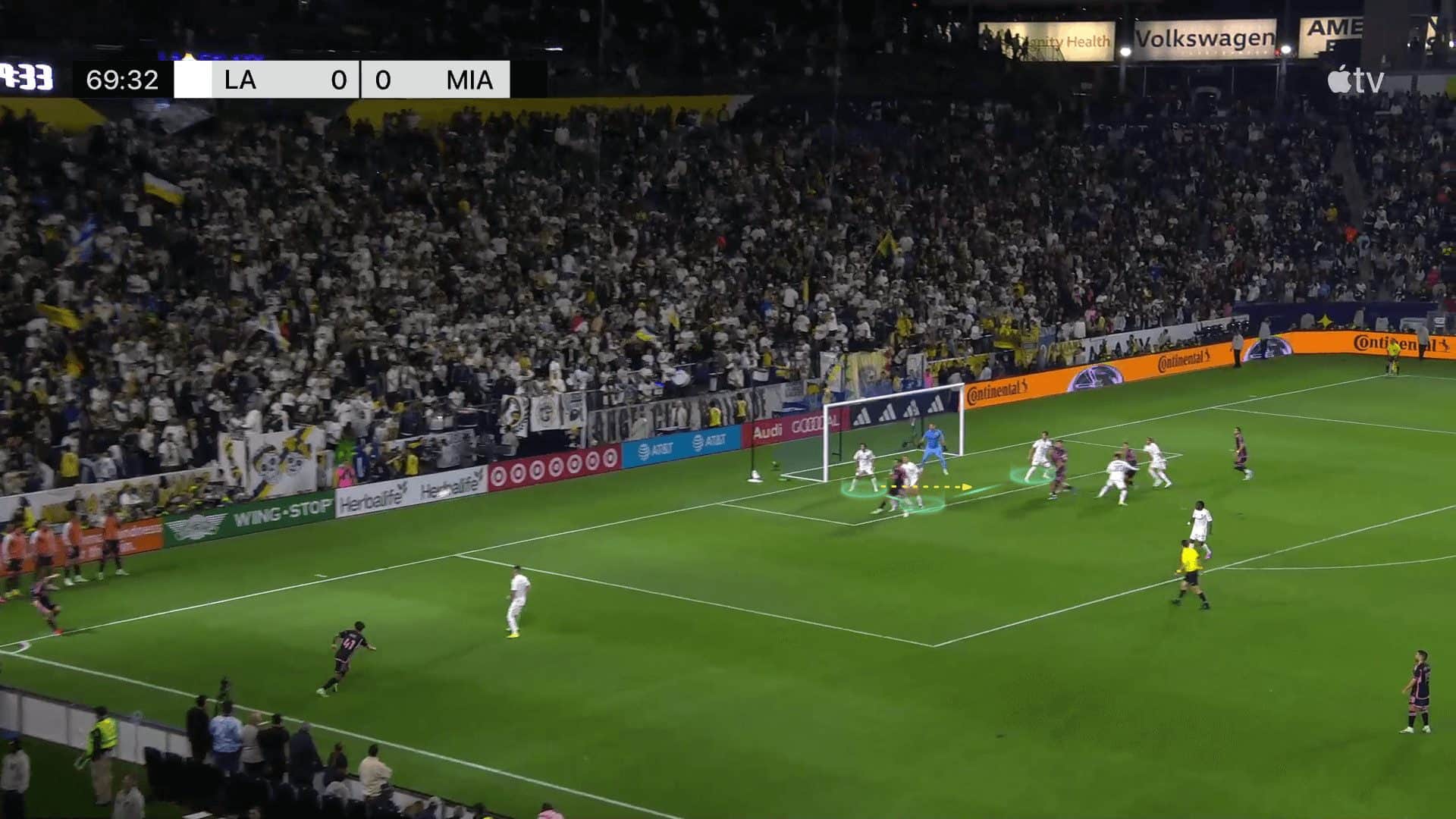

As a hint, this problem doesn’t appear against expected out-swinging crosses because they push outwards with an inclined line to deal with the cross trajectory, so the second zonal defender naturally fills this gap, as shown in the two photos below.
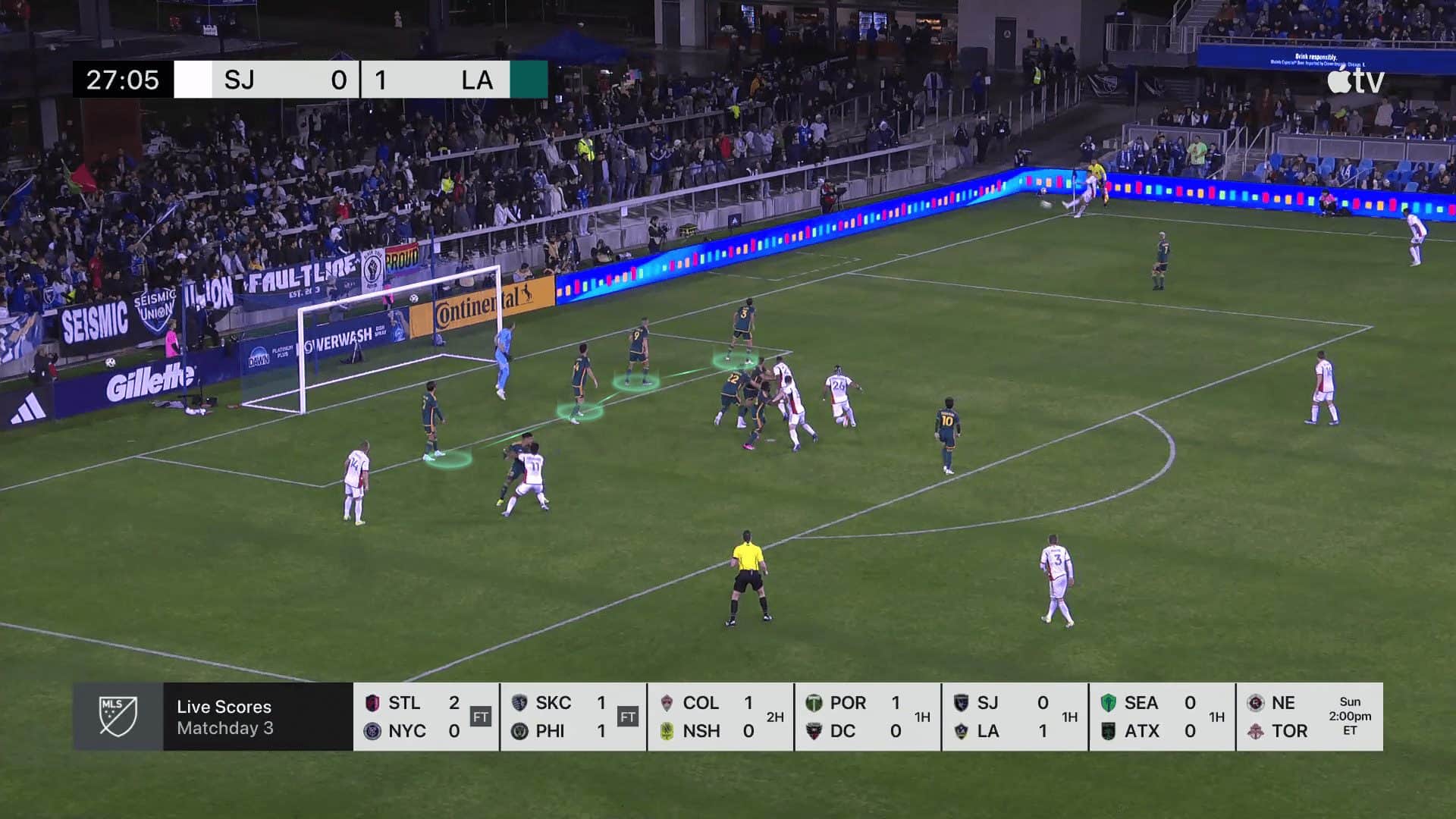
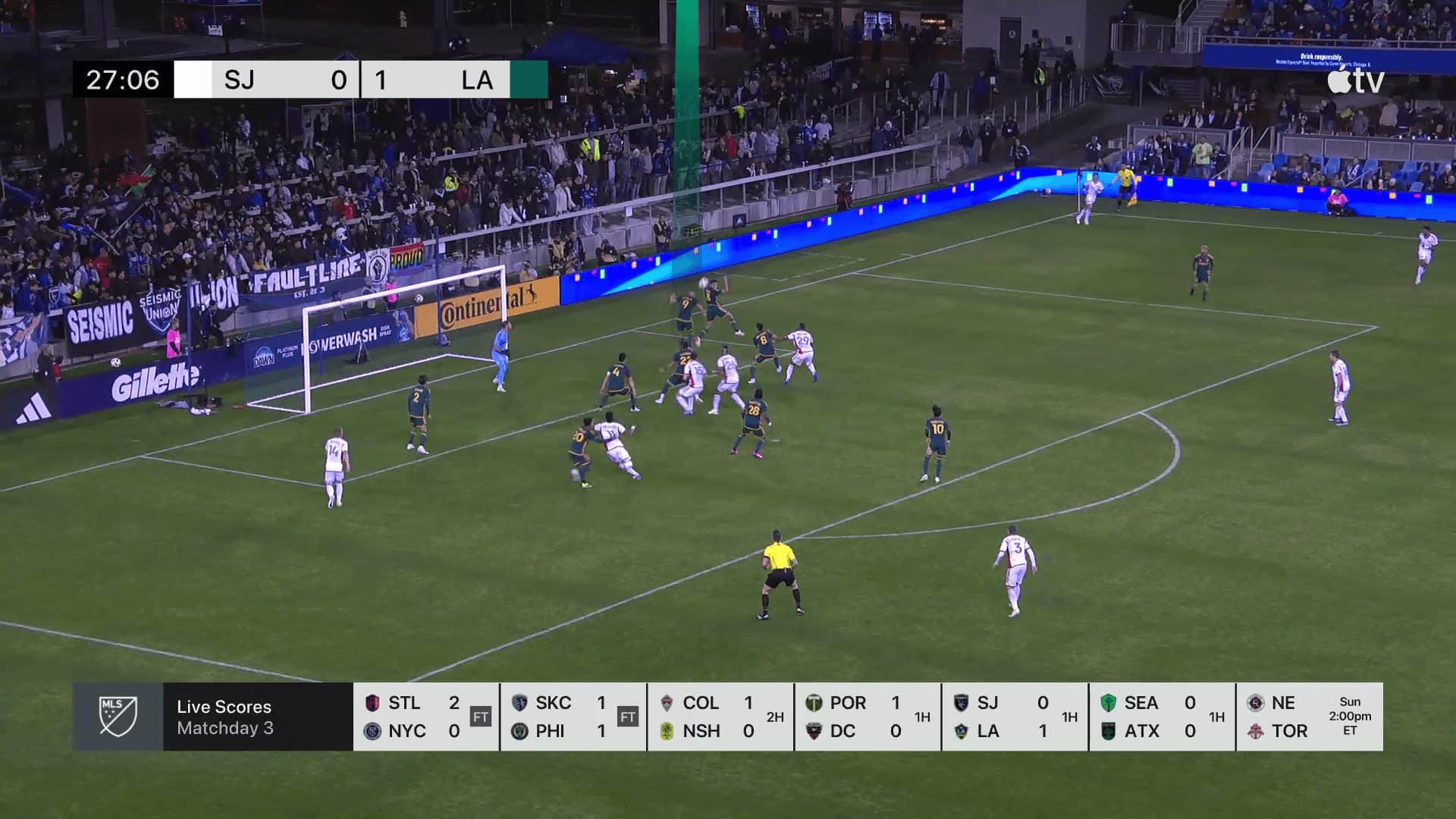
As a suggestion, we think that this shifting, using the zonal defender near the post to cover the area behind the first zonal defender in case of going forward to defend flicks, is preferable to be used when you have a lot of zonal defenders because gaps are not significant in this case. For example, you can see Liverpool using six zonal defenders in the first two photos below, so the zonal defender on the post can easily cover this small gap behind the white-highlighted flick zonal defender quickly and easily.
However, in case you want to defend flicks while having four zonal defenders, you have so many ways, so we will mention some methods that Arsenal use. In the third and fourth photos below, Arsenal employ four zonal defenders too, but they ask Kai Havertz, highlighted in white, to defend flicks knowing that he is the first zonal defender, not the second as LA Galaxy do, because this will reduce a smaller gap than asking the second one to go, Ben White in this case. We should also mention that Havertz stands in a different body shape, allowing him to defend the near-post area first and then allowing him to see any attacker cuts to flick the ball or get the first touch.
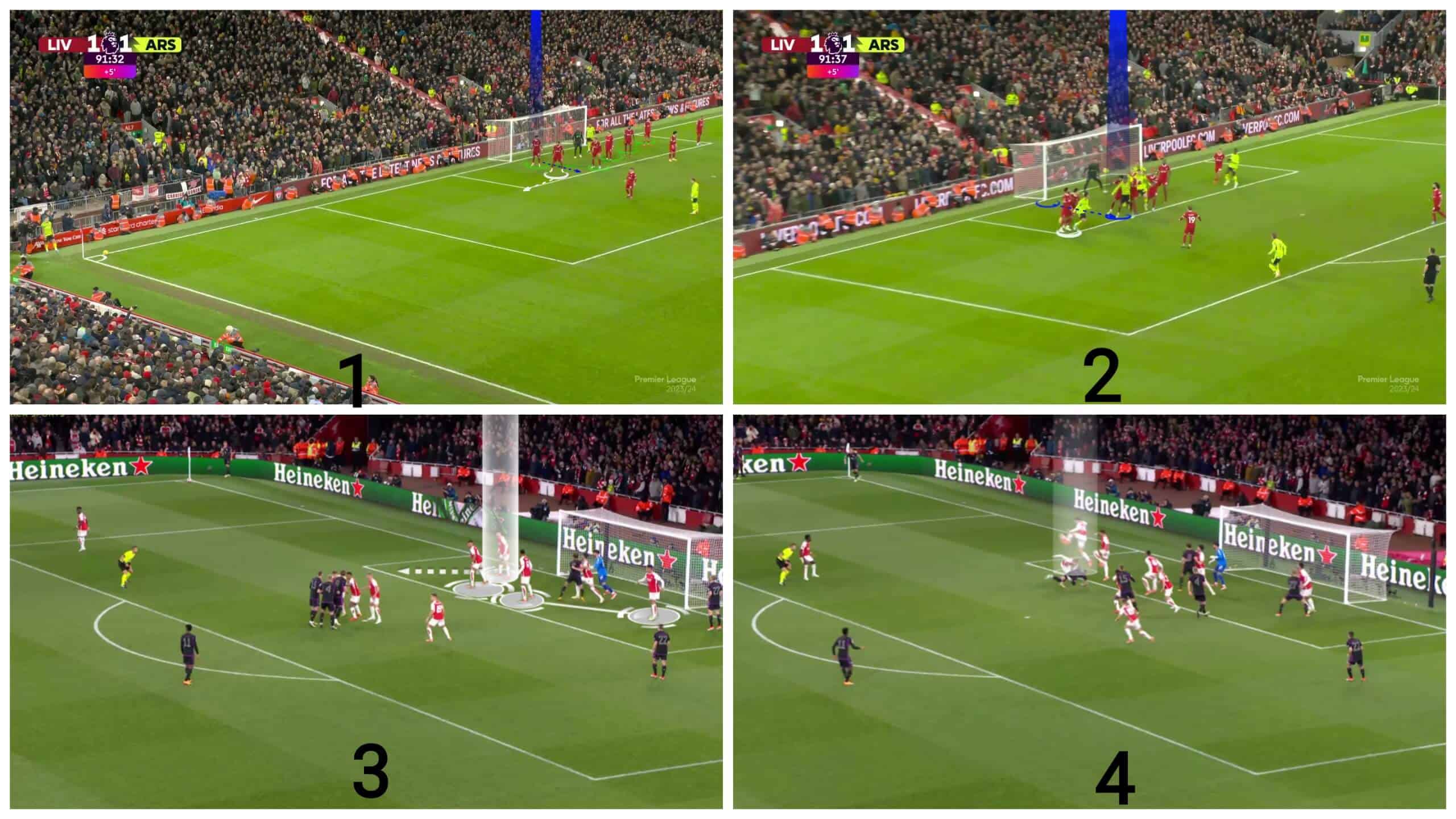
As shown below, Arsenal find no problem in using an additional zonal player to defend flicks if they face a team that attacks this area brilliantly. They are adjusting many positions during the season journey while facing certain opponents, so there is no model answer, but players should know who fills this gap.
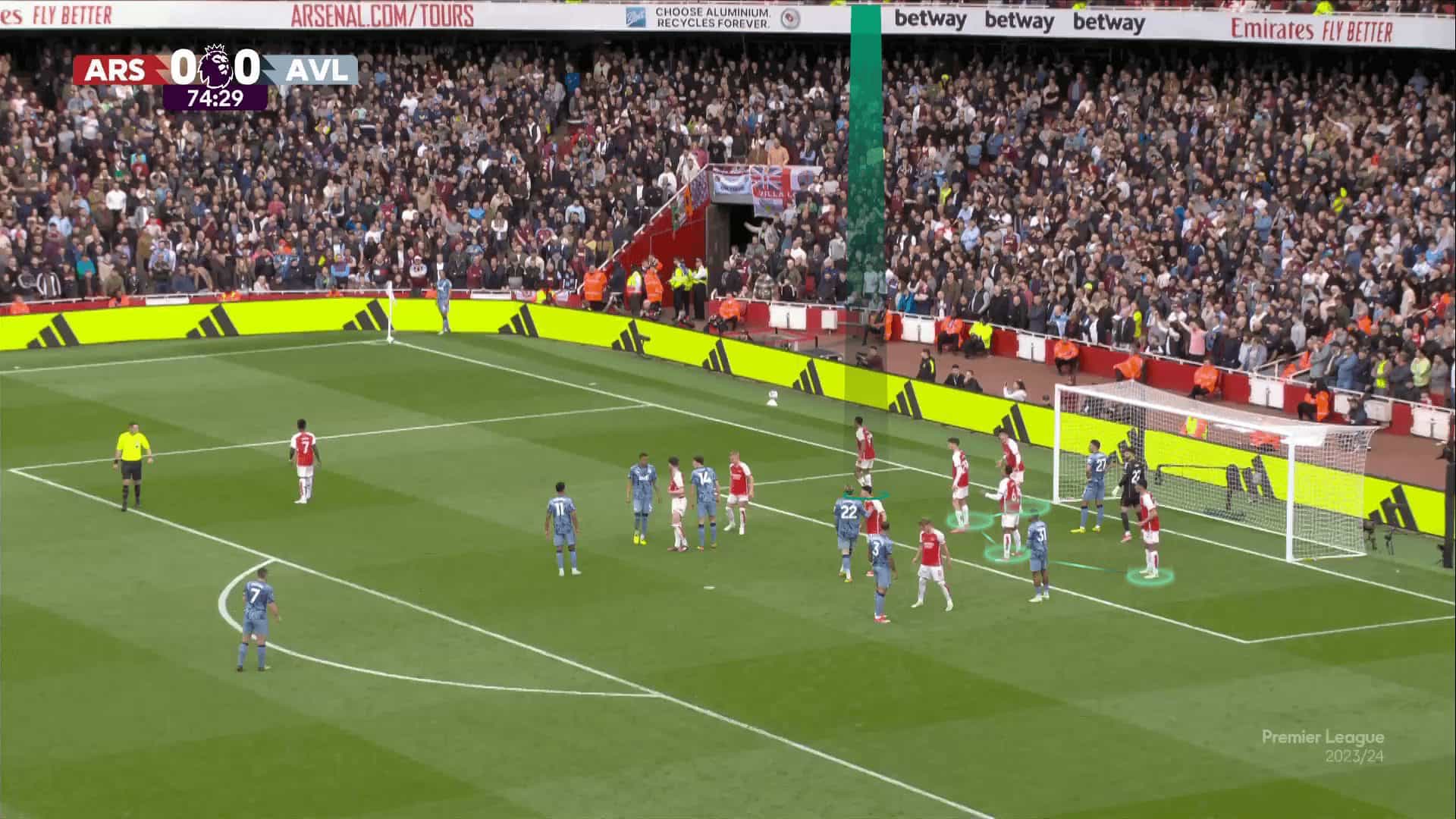
Double trouble
In the case below, we have the two problems at near and far posts in the same case. Let’s see it in detail!
In the first photo below, the yellow-arrowed attacker moves to the area before the near post to drag the second zonal defender to increase the gap between him and the third zonal defender, who will be targeted with the free player, highlighted in orange. In the second photo below, the targeted area is empty. At the same time, an attacker tries to run to the far post to frame the goal in case the cross is overhit, or the first targeted player can’t shoot it inaccurately, so he goes to follow the ball, escaping from his man markers, exploiting that defender’s focus on the ball. Still, the last green zonal defender stands well, which should kill this possibility.
In the third photo, the ball passes everyone indeed, but another problem of the last zonal defender appears, which is he prefers to defend the ball, not the goal, so he decides to step back, which gives the opportunity to the yellow attacker to kick the ball directly scoring an easy goal, as shown in the fourth photo.
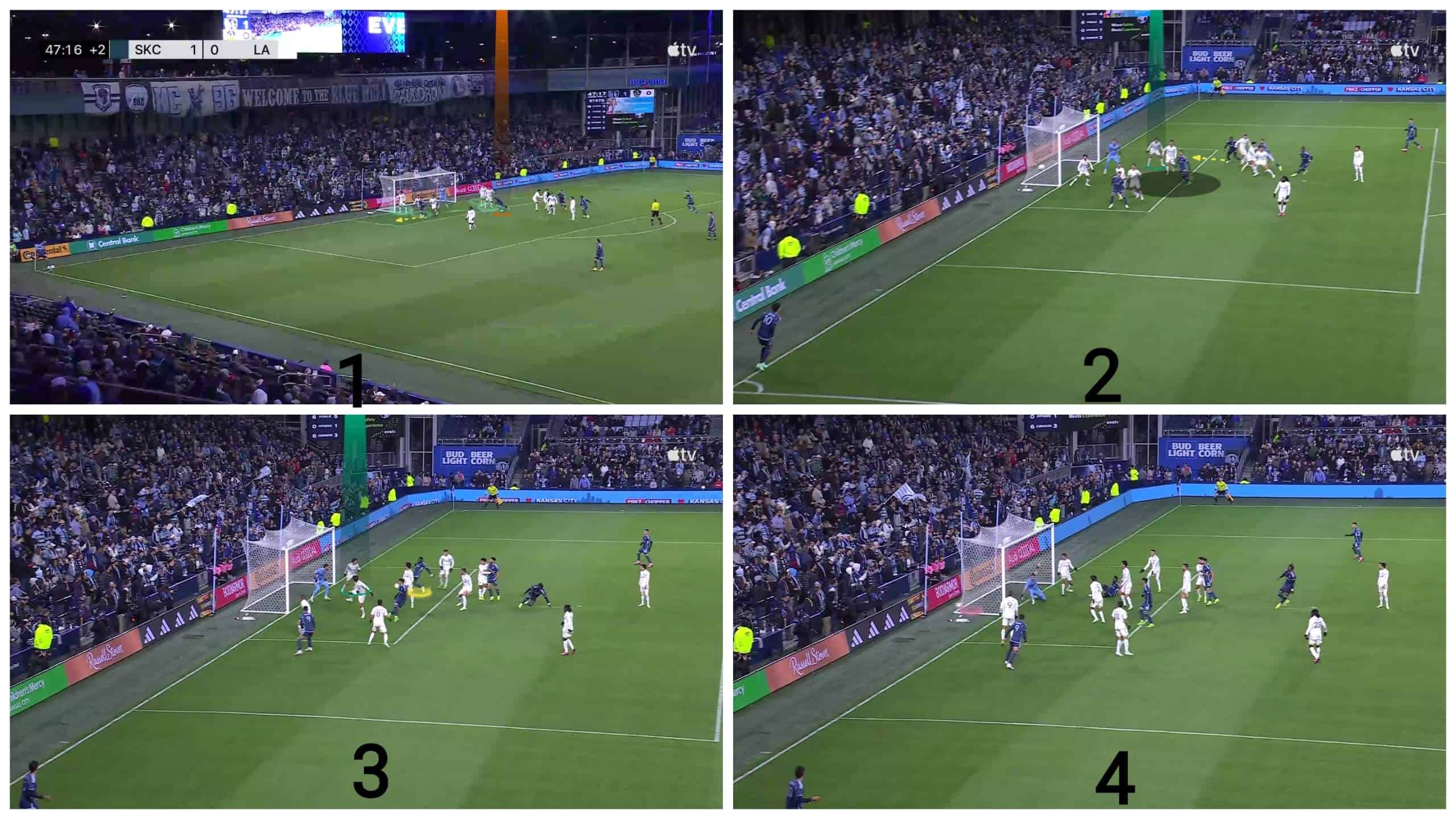
Lately, they have changed their defending scheme, using only two zonal defenders and giving priority to the man-marking defending system. Let’s wait and see if that will be successful.
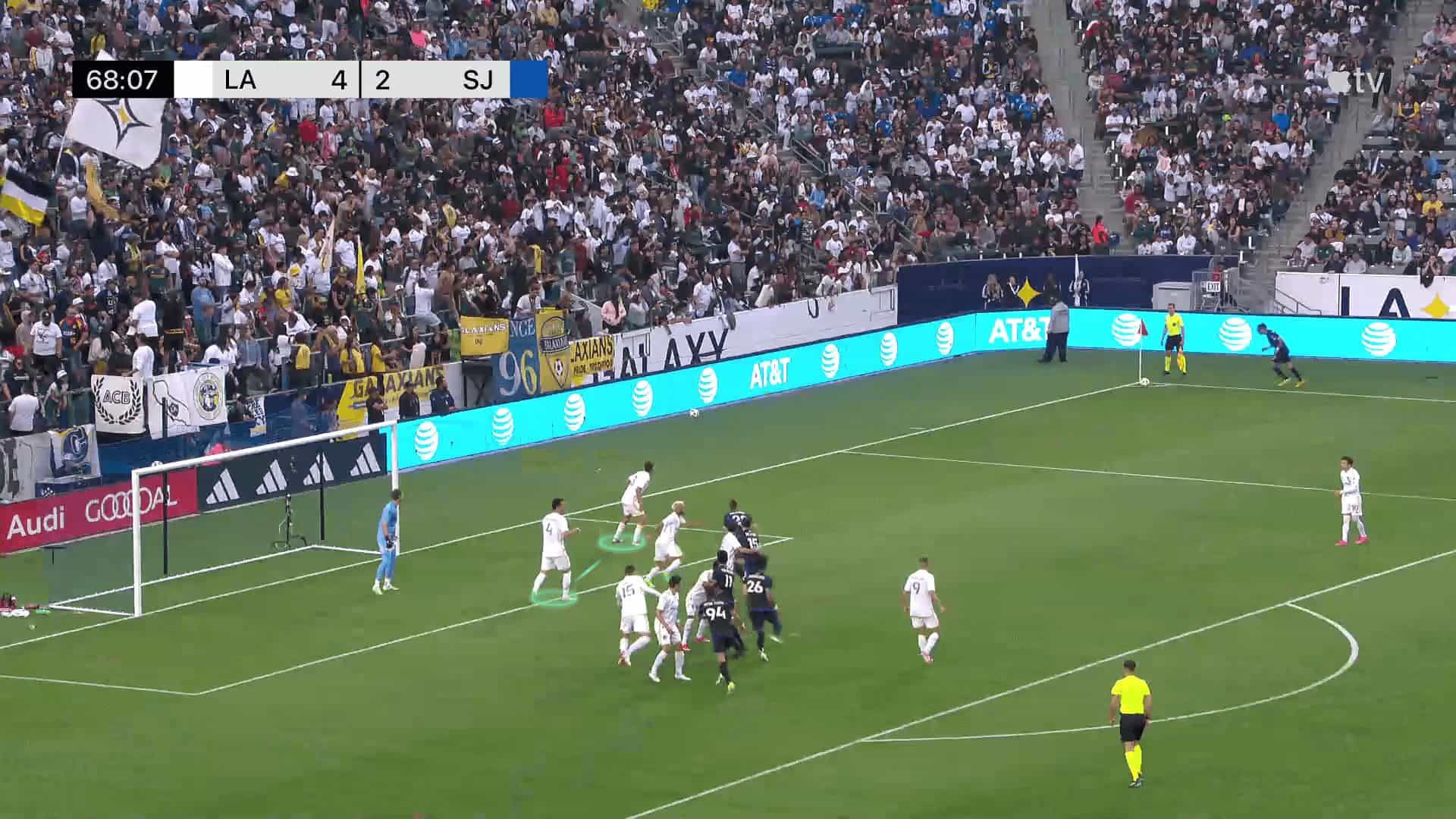
Conclusion
In this analysis, we have shone light on the deficiencies of LA Galaxy’s scheme at defending set-pieces, which have resulted in being the team to have conceded the most from set plays in Major League Soccer, with seven goals conceded in just 10 matches, six from corner kicks, the most in the league too. This is also notable given their second-place position in the Western Conference of Major League Soccer, trailing the table-toppers, Real Salt Lake, by just a goal difference.
In this set-piece analysis, we found a couple of problems. First, the last defender often turns into a man marker, leaving a gap that opponents can exploit easily. Second, when the first zonal defender moves to defend flicks and to get the first touch, they sometimes leave the area in front of the near post undefended. This creates a big gap that opponents can take advantage of. We also suggested some ideas for improvement. LA Galaxy has decided to change their approach, so we’ll have to wait and see if it works out for them.






Comments